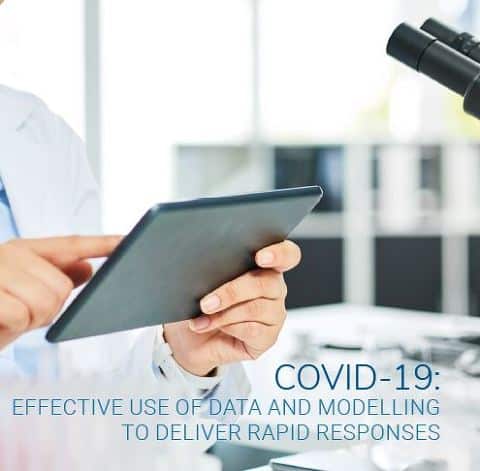Can we do quality thought leadership quickly?
Responding to an uncertain world with gravitas and integrity
Good thought leadership influences difficult decisions by presenting an evidence-based case for change.

This takes time. You need to do research, speak to experts, gather data, write and rewrite. It can’t be churned out like a blog or a tweet. But, it will be credible and worth someone’s time reading.
So, what happens when you don’t have time? For example, when a global pandemic changes all your potential customer’s priorities.
When COVID-19 hit, our client Tessella, a data science consultancy, knew they could help life sciences deal with urgent challenges.
But a conservative industry, undergoing unprecedented disruption, needs more than just assurances. Amazingly, within three weeks, we went from a call acknowledging the opportunity, to a report that was generating interest from potential clients.
Five principles for thought leadership at speed
This isn’t something we’d want to do all the time. Time to plan, pick apart issues, pause and reflect are all hugely valuable for thought leadership. But it was good to discover that when the heat was on, we could deliver. So we wanted to share a few learnings on creating high quality content at speed.

1. Agree everything upfront: Start with a call, including all people who will feed in, and agree the core theme, format and process. Outline key dates and responsibilities and ensure everyone agrees.
2. Get buy in across the board: Everyone involved has to recognise this is a strategic project that will allow their business to take advantage of an opportunity, if they move fast. This means buy in not just from marketing, but from business leaders and subject matter experts.

3. Setup an expert review team: Establish a project team with the expertise to produce a report of genuine value to your customers, and with the authority to sign off sections as they are developed. Keep this small, focussed and involved.
Avoid involving ‘I’ll get to it when I’ve finished my proper work’ people. And avoid bringing people in to review at the end. Anyone who wants/needs to input or sign off must be involved from the start.
4. Work with experienced people: When time is an issue, you don't want to be training people, correcting inaccuracies or rewriting content that isn’t good enough.
Use employees or consultants who know your business and are smart enough to get the best from your experts. A company like Memetic, which only employs senior people with years of experience, can often deliver a rapid turnaround. But this will still be faster with people you have worked with in normal times. If you don’t have such people, it may be a good idea to start looking for them, so you’re ready next time something disruptive happens.
5. Brief supporting roles: The project doesn’t end with the content. Be ready to use it quickly. Make sure designers and web teams are standing by to get it produced, uploaded, and gated. Whilst content is being developed, plan marketing tactics: the newsletter, LinkedIn campaign, social posts, etc. Brief sales teams so they are ready to use it to engage prospects.
Shorter timeframes intensify the usual rules
The above are always good practice. But the realities of business don’t always allow this sort of speed and focus. Senior people want to sign off but don't have time to input upfront. Experts can’t always drop everything. And anyway, going through a few iterations often leads to a better outcome.
With more time, there is more flexibility, and these challenges can be accommodated. But when moving at four times the normal pace, the above principles maximise your chance of rapid success.
The Tessella COVID-19 content series can be read here and the full report downloaded here.
Memetic creates thought leadership and content marketing projects for science and technology organisations. We consider work on a project or retained basis to offer our clients maximum flexibility to move at the pace they need.
For more insights like this, sign up to our newsletter.









